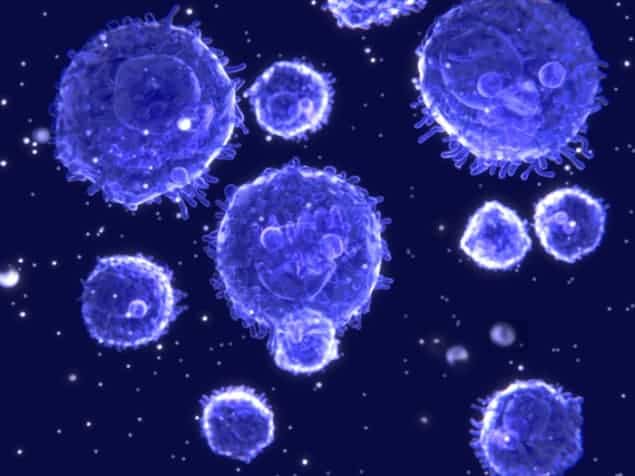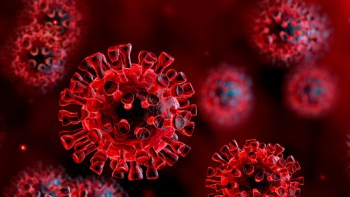
A simple model that explains why clusters of some living cells will move in response to certain chemicals – even when individual cells do not respond on their own – has been unveiled by physicists in the US. Their model of “collective guidance” could provide important insights into the role of cell motion in multicellular organisms and even help scientists to understand how cancerous tumours form and spread.
Chemotaxis is the process whereby cells move in the direction of a change in the concentration of a chemical in the local environment. It plays a crucial role in the function of some micro-organisms, allowing the tiny creatures to move towards regions with a high concentration of food. Chemotaxis also plays an important role in the development of multicellular organisms by ensuring that different types of cells move to appropriate locations to form tissues and organs. The emergence of some cancerous tumours is believed to involve the breakdown of normal chemotactic processes in the body.
All together now
While some cells will perform chemotaxis as isolated single cells, others such as lymphocytes will only move when they are part of a small group – something that has long puzzled biologists. But now, Wouter-Jan Rappel and colleagues at the University of California, San Diego, and Rice University have created a model of chemotaxis that explains how individual cells can work together to respond to a chemical-concentration gradient.
Laboratory observations suggest that when cells get close together, they tend to move away from each other – an effect called “contact inhibition of locomotion” (CIL). In its model, the team set the strength of the CIL interaction to be proportional to the concentration of a chemotactic chemical. In other words, cells move away from each other more quickly in high chemical concentrations than they do in low concentrations. The team then used the model to simulate the motion of cells in rigid clusters – in which the cells are stuck to each other but are trying to pull apart – and non-rigid clusters in which the cells can pull apart.
In the case of a rigid cluster made of just two cells, both cells want to move away from each other. However, the cell that is in the region of the highest chemical concentration will pull hardest, and therefore the two cells will move in the direction of higher concentration. This scenario also applies to larger rigid clusters, and the model suggests that the chemotaxis velocity increases with the number of cells in the cluster – but then saturates at a maximum value when there are about 60 cells. The team also found that the chemotaxis velocity depends upon the shape of the cluster, as well as its orientation with respect to the chemical-concentration gradient.
Breaking up
The team also looked at non-rigid clusters of cells in which cells are more loosely bound and can move relative to each other or even break free of the cluster. While non-rigid clusters also tended to move towards the region of high chemical concentration, chemotaxis was slower compared with rigid clusters. The simulations also suggested that non-rigid clusters will break apart over time.
The results of the simulations agree with laboratory studies of some chemotactic cells such as lymphocytes, which show that chemotaxis is strongest for larger clusters. Studies of other organisms, however, show no connection between chemotaxis strength and cluster size. The team is now refining its model to try to make it applicable to a wider range of chemotaxis behaviours.
The model is described in Physical Review Letters.



